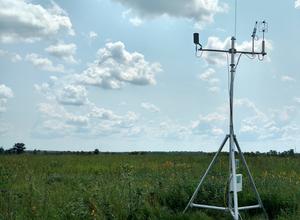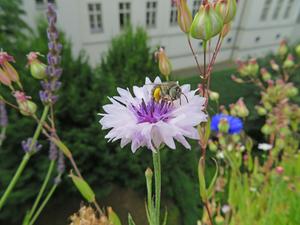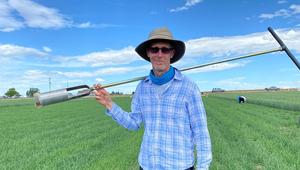06/07/2025 SOURCE: www.eurekalert.org
A new international study involving researchers from Durham University has revealed that climate change is accelerating the rate of development and global abundances of antibiotic resistance bacteria in soils.
New study reveals global warming accelerates antibiotic resistance in soils
-
(0)
-
Bookmark
- Comments. (0)
01/11/2024 SOURCE: www.eurekalert.org
Scientists at the USDA Forest Service’s Rocky Mountain Research Station and the University of Nevada, Reno studied the foraging habits of wild bees. Their findings, published today in the Proceedings of the National Academy of Sciences, can help guide seed and plant choices that support and enhance wild bee populations. In short, their research showed that different bee species have different nutritional needs. Given that not all pollens are the same, bees forage accordingly to meet their unique needs. This research may help fight against pollinator declines through better design of rangeland restoration projects.
Nutrition needs drive bee appetites
-
(0)
-
Bookmark
- Comments. (0)
12/11/2023 SOURCE: www.eurekalert.org
A Leeds researcher is keen to help beekeepers shape their practices following his study which appears to disprove the widespread belief that honeybees naturally insulate their colonies against the cold. His findings suggest that the creatures are potentially being subjected to thermally-induced stress.
Honeybee cluster—not insulation but stressful heat sink
-
(0)
-
Bookmark
- Comments. (0)
07/10/2023 SOURCE: www.eurekalert.org
Livestock, the petroleum industry and landfills are all leading producers of methane, a potent greenhouse gas. But another significant but less well known contributor is one of the world’s most popular crops: rice. Rice plants transport methane from the flooded rice field into the atmosphere. A new paper from researchers at the Alliance of Bioversity International and CIAT has found that it is possible to lower emissions by developing new varieties of rice.
In search of rice to reduce methane emissions
-
(0)
-
Bookmark
- Comments. (0)
-
(0)
-
Bookmark
- Comments (0)
06/23/2023 SOURCE: www.eurekalert.org
One of the main reasons plants use water is to allow them to absorb carbon dioxide from the atmosphere. This means that, in plants, the water and carbon cycles are tightly linked. In a new study, researchers from the University of Missouri and the United States Department of Agriculture (USDA) used this foundational principle to identify sustainable farming practices aimed at helping staple crops like corn and soybeans thrive during extreme weather conditions that have become more common in the Midwest.
New MU study examines variability of water, carbon in Missouri agriculture ecosystems and future impact on crops
-
(0)
-
Bookmark
- Comments. (0)
06/23/2023 SOURCE: www.eurekalert.org
Butterflies are being hit hardest by urban growth. Shrinking habitats and food availability are causing their populations to decline. The same applies to many wild bees that fly early in spring. According to a new study by the Martin Luther University Halle-Wittenberg (MLU) and the Chinese Academy of Sciences in "Ecology Letters", pollination has not yet been impacted by this because honeybees, for example, can compensate for the reduction of urban pollinators. The study is the first comprehensive analysis of the subject and includes data from 133 studies. The results underline the importance of nature conservation measures in urban areas.
Global analysis on pollinators in cities: Wild bees and butterflies are at particular risk
-
(0)
-
Bookmark
- Comments. (0)
06/22/2023 SOURCE: www.eurekalert.org
Current farming practices disrupt soil, release carbon into atmosphere
Researchers to train farmers on how to reduce greenhouse gas emissions, improve soil health
-
(0)
-
Bookmark
- Comments. (0)
03/23/2023 SOURCE: www.eurekalert.org
While microplastics have received significant attention in recent years for their negative environmental impacts, a new study from Oregon State University scientists found microfibers from synthetic materials as well as cotton impacted the behavior and growth of water organisms.
Looking beyond microplastics, Oregon State researchers find that cotton and synthetic microfibers impact behavior and growth of aquatic organisms
-
(0)
-
Bookmark
- Comments. (0)
 John LaRose Jr.
John LaRose Jr.
Topics: Cotton, Agriculture US, Economics, Crop Diseases, Fungicides,
Fusarium wilt of cotton more aggressive and diverse than previously understood
Cotton is an important crop worldwide and grown in large amounts in the United States, which provided 38 percent of cotton exports in 2017. One of the greatest threats to cotton production is Fusarium wilt, a fungal disease caused by the soil-borne pathogen Fusarium oxysporum f. sp. vasinfectum (FOV). In a study recently published in Plant Disease, plant pathologists, agronomists, and breeders in California, Texas, and North Carolina identified current populations of FOV in infected plants and examined their diversity and aggressiveness during the seedling and wilt stages of disease development.
-
(0)
-
Bookmark
- Comments (0)



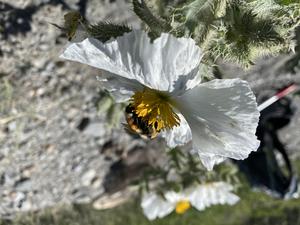
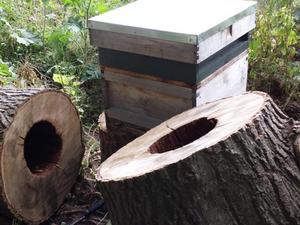
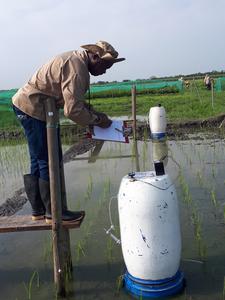
 Nancy Kavazanjian
Nancy Kavazanjian
